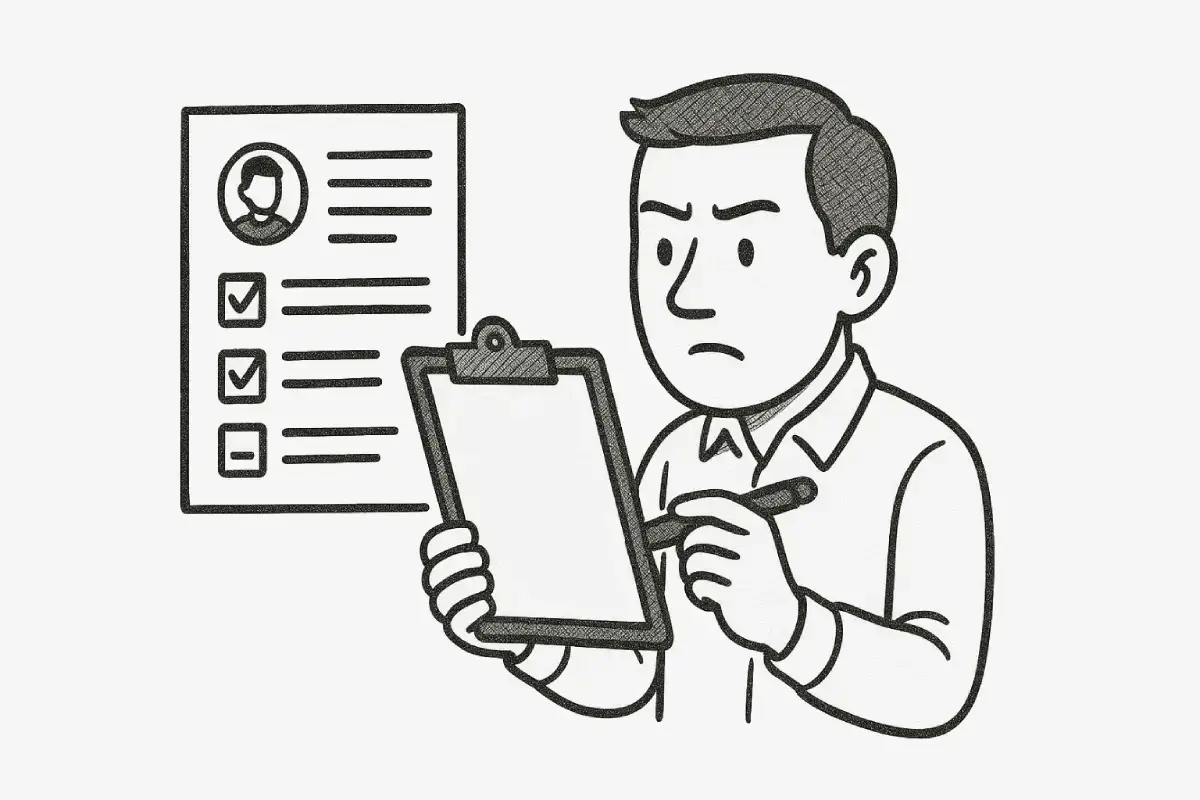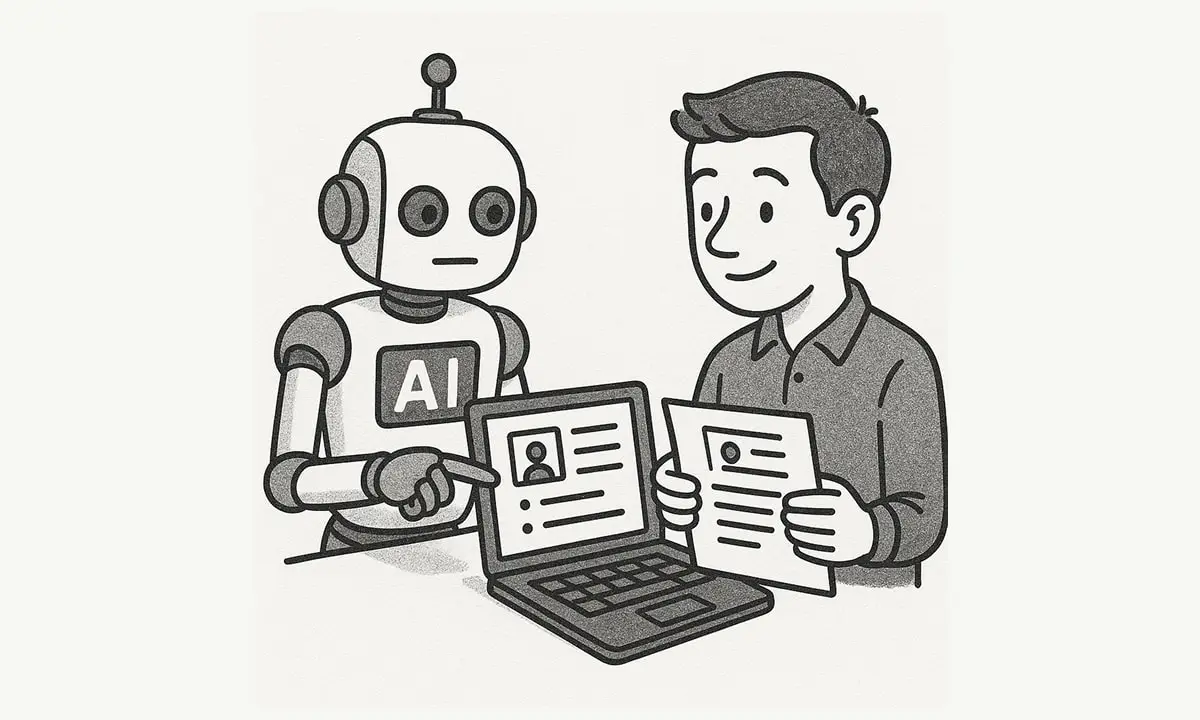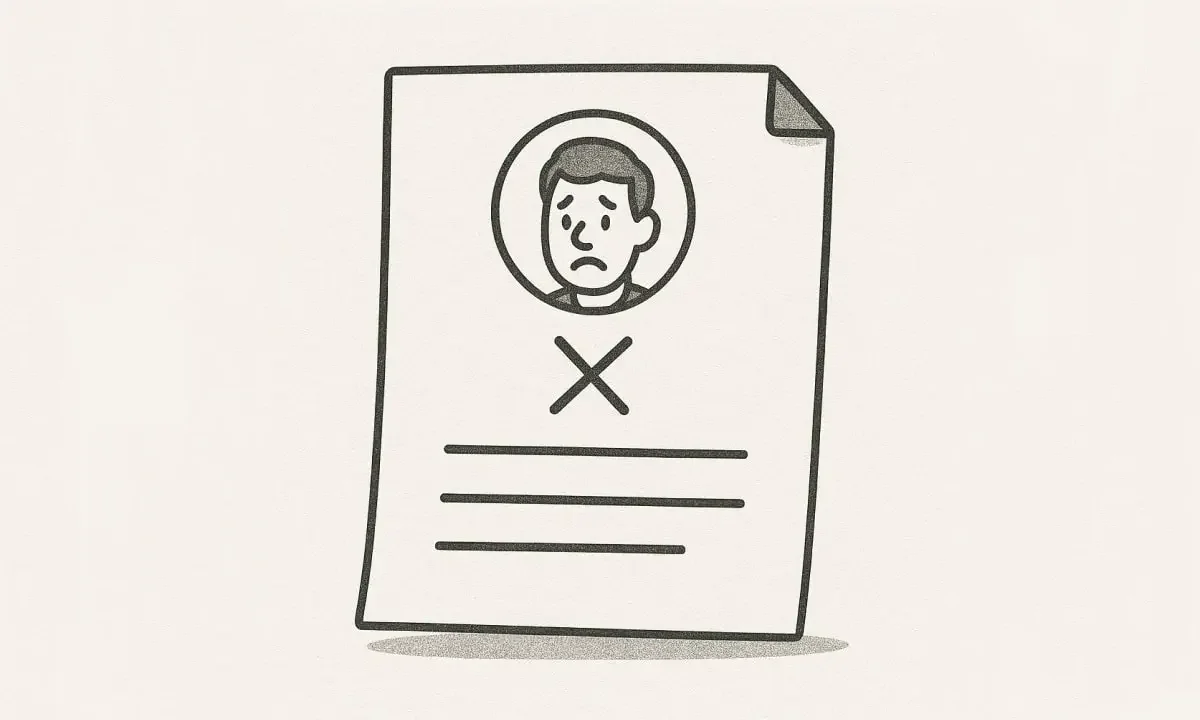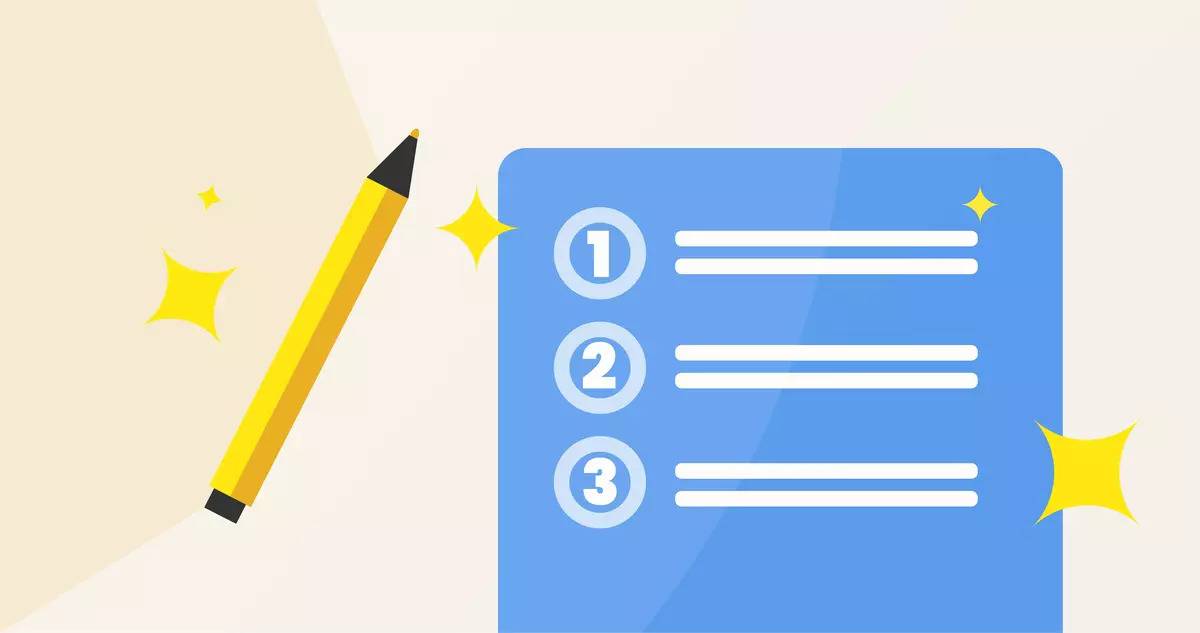I once sent a resume for what I thought was my dream job—like, the kind of job you fantasize about on a miserable Tuesday morning when your coffee is cold and you’ve got 17 unread emails from Brenda in accounting. This was it. The big one. I spent days on that resume. I polished it until it gleamed. I used words like “synergized” and “leveraged” because I thought it made me sound like I knew what I was doing.
I hit send, leaned back in my chair, and felt that glorious wave of accomplishment wash over me. I’d done it. The perfect application.
Two days later, I got an automated rejection email. Bummer, but it happens. I moved on. It wasn’t until a week later, when I was cleaning up my desktop, that I opened the file I’d sent. And there it was. In giant, bold letters at the top, right under my name, was the title: “Resume Draft – FINAL v3 — USE THIS ONE DEFINITELY.” I had sent the wrong file.
My soul just… shriveled up and died a little bit that day. All that work, all that stress, all for nothing because of a stupid, five-second mistake. And that, my friends, is why we’re here today. Because your resume isn’t just a piece of paper (or, you know, a PDF). It’s your golden ticket. It’s the first impression, the handshake, the “nice to meet you” before you ever get to say a word. And you would not believe how easy it is to mess that up.
So, before you hit “submit” on another application and pray to the job gods, I want you to walk through this checklist with me. Think of me as your slightly-too-caffeinated fairy godmother of careers. Let’s make sure your resume doesn’t get tossed in the digital trash heap before a human even lays eyes on it.
The Sanity Check: Are You Even Applying for the Right Job?
I know, I know, this sounds ridiculously basic. But you’d be shocked. When you’re in the zone -firing off applications like you’re playing an arcade game, it’s so easy to get your wires crossed.
I swear, I once had a friend who was a brilliant graphic designer apply for a senior accountant position because the tabs on his browser all looked the same. He didn’t realize it until he got a call to schedule an interview and they started asking him about his experience with quarterly tax filings. Awkward.
So, first things first. Deep breath.
- Read the Job Title. Out Loud. Does it match what you do? Or what you want to do?
- Read the Company Name. Out Loud. Is it spelled correctly on your cover letter and, if you mentioned it, on your resume? Nothing says “I don’t care” quite like applying to “Googel.”
- Read the Top 3 Responsibilities. Do they make you feel a little flicker of excitement? Or do they make you want to curl up in a ball and watch Netflix for 12 hours straight? If it’s the latter, maybe—just maybe—this isn’t the job for you, and no amount of resume-tweaking is going to change that.
This isn’t just about avoiding silly mistakes. It’s about being intentional. Applying for jobs shouldn’t feel like throwing spaghetti at a wall to see what sticks. It’s a targeted mission. You’re the secret agent, and the job description is your mission briefing. You have to know what you’re getting into.
The Robot Gauntlet: Surviving the ATS Apocalypse
Get this: a huge percentage of companies—something like 99% of Fortune 500s, according to some reports—use something called an Applicant Tracking System, or ATS. It’s basically a robot bouncer for your resume. Before a human recruiter with a soul and a coffee addiction ever sees your beautifully crafted document, it has to get past this software. And the ATS is… well, it’s not smart. It’s a machine looking for keywords.
It doesn’t care that you’re a “go-getter” or a “visionary.” It cares if you have the specific words from the job description in your resume. It’s a brutal, soulless game of matching.
You Have to Speak Their Language
This is where the concept of “tailoring” your resume comes in, and it is the single most important piece of advice anyone will ever give you on this topic. Sending the same generic resume to every single job is the fastest way to get ignored. It’s like using the same pickup line on every person at a bar. It’s lazy, and it shows.
So, here’s the game plan:
- Print out the job description. Or open it in a separate window. Get a highlighter. Yes, a real one. Or a digital one. I don’t care.
- Highlight every key skill, software, and responsibility. Look for words that appear over and over. “Project Management”? Highlight it. “SEO Strategy”? Highlight it. “Client Relations”? You get the idea.
- Now, look at your resume. Are those exact words in there? Not synonyms. The exact words. If the job description says “content creation,” your resume shouldn’t say “making cool stuff for the internet.” It should say “content creation.”
I mean, seriously, don’t try to get creative here. The robot doesn’t appreciate poetry. It appreciates data. Give it the data it wants.
My personal rule: If I can’t find at least 5-7 key phrases from the job description that I can honestly and naturally weave into my resume, I don’t apply. It means I’m probably not a good fit, and I’m just wasting my time and theirs.
It sounds like a lot of work, and it is. But would you rather send 100 generic resumes and get two calls back or send 20 highly-tailored resumes and get ten calls back? It’s a numbers game, but you can rig it in your favor.
The “So What?” Test: Turning Chores into Triumphs
Okay, so you’ve survived the robots. Now your resume has landed in the hands of a real, live human. But here’s the terrifying part. Studies have shown that recruiters spend an average of—wait for it—about seven seconds looking at a resume before making a snap judgment.
That’s less time than it takes to microwave a burrito. In those seven seconds, your resume needs to scream, “I AM THE ONE YOU’VE BEEN LOOKING FOR!”
How do you do that? By passing the “So What?” test.
Read every single bullet point on your resume. After each one, ask yourself, “So what?”
- “Managed the company’s Instagram account.”
- So what?
- “Wrote weekly blog posts.”
- So what?
- “Responsible for customer service inquiries.”
- So what?
See how boring that is? It’s a list of chores. A job description. It doesn’t tell me if you were any good at it. It doesn’t tell me the impact you had.
Now, let’s try again. Let’s add the magic ingredient: results. Numbers. Proof.
- “Grew the company’s Instagram following by 40% in 6 months through a targeted hashtag strategy and engaging video content.”
- “Wrote weekly, SEO-optimized blog posts that increased organic website traffic by 25% year-over-year.”
- “Maintained a 98% customer satisfaction rating by resolving inquiries within a 2-hour timeframe, exceeding the team average by 3 hours.”
See the difference? One is a list of things you were told to do. The other is a list of things you achieved. It shows you didn’t just show up; you made a difference. And that’s what they’re paying for.
Don’t Have Numbers? Find Them.
“But I was in a role where I didn’t have numbers!” I hear you cry. I call shenanigans.
You can quantify almost anything if you get a little creative.
- Didn’t track the numbers? Estimate. “Increased efficiency by an estimated 15%.”
- Worked on a team? “Contributed to a team project that secured a $100,000 client.”
- Did something qualitative? “Implemented a new filing system that was adopted company-wide and praised by senior management for its clarity and ease of use.”
It’s about changing your mindset from “What did I do?” to “What was better because I was there?” That’s the story you need to tell. And it’s a story that is becoming increasingly important as the job market evolves. The skills needed today are all about impact and problem-solving, as highlighted in reports like the World Economic Forum’s Future of Jobs Report. Your resume needs to reflect that you’re not just a cog in the machine, but someone who can actively improve it.
The Vibe Check: Is Your Resume Ugly?
Let’s be brutally honest for a second. Design matters.
Your resume doesn’t need to be a masterpiece of modern art. In fact, please don’t make it one unless you’re a designer. But it does need to be clean, professional, and easy to read. Remember the seven-second rule? If a recruiter has to squint and hunt for information, you’ve already lost.
The Wall of Text Catastrophe
This is my biggest pet peeve. A resume with margins so tiny they’re barely there, font size 8, and no white space. It’s an assault on the eyes. It’s a visual representation of desperation.
- Margins: Keep them at least 0.7 inches. Let it breathe.
- Font: Use something clean and classic. Calibri, Arial, Georgia. Nothing crazy. And for the love of all that is holy, keep it between 10 and 12 points.
- White Space: This is your best friend. Use it to break up sections. Don’t cram everything together. Short paragraphs and bullet points are key.
And please, for the love of god, SAVE IT AS A PDF.
I cannot stress this enough. Sending a Word document is like playing resume roulette. It can look completely different on someone else’s computer. Fonts get messed up, formatting goes haywire—it’s a disaster. A PDF locks everything in place. It’s a snapshot of perfection. Unless the application specifically asks for a .doc file (which some older ATS systems do), PDF is the only way to go.
The Final Polish: You Are Now the Enemy
You’ve done it. You’ve tailored the content, quantified your achievements, and made it look pretty. You’re ready to send it, right? Wrong.
Right now, you’re too close to it. Your brain knows what it’s supposed to say, so it will automatically overlook mistakes. It will read “Managed” even if you typed “Manged.” It’s a known psychological blind spot.
So, you need to trick your brain.
- Print It Out. I’m serious. Staring at a physical piece of paper engages a different part of your brain than staring at a screen. You will spot things you missed a dozen times before.
- Read It Aloud. You will feel like a complete weirdo doing this, but it works. When you read it out loud, you’ll hear awkward phrasing, clunky sentences, and typos that your eyes just skimmed over.
- Read It Backwards. This is an old editor’s trick. Start with the last word of your resume and read it word by word to the beginning. This forces your brain to look at each word individually instead of reading for context, making it a killer way to spot spelling errors.
- Phone a Friend. Get a fresh set of eyes on it. Someone you trust. And don’t just ask them, “Does this look okay?” Give them specific instructions: “Can you please check for any typos or grammatical errors? And can you tell me if this bullet point makes sense to you?”
This final, obsessive check is what separates the good from the great. It’s the last 5% of effort that makes 95% of the difference. It shows you’re not just competent; you’re meticulous. And who doesn’t want to hire someone like that? You can even get an objective, AI-powered opinion on your final draft with a free tool like the Resume Score Analyzer from Jobicy to catch things a human eye might have missed.
So there it is. Your pre-flight checklist.
Your resume isn’t a history of your life. It’s a marketing document. And the product is you—your skills, your accomplishments, your potential. It’s your opening argument for why you are the absolute best person for this job.
Don’t let a typo, the wrong file name, or a boring bullet point sink your chances before you even get to set sail. Go through the list. Be obsessive. Be your own harshest critic.
Because that dream job is out there. And it deserves to see you at your absolute best.
What’s the wildest resume mistake you’ve ever made or seen? I want to hear it. Drop it in the comments below so we can all feel a little better about ourselves.
You might also like: Remote Apprenticeships: The Next Big Thing?









